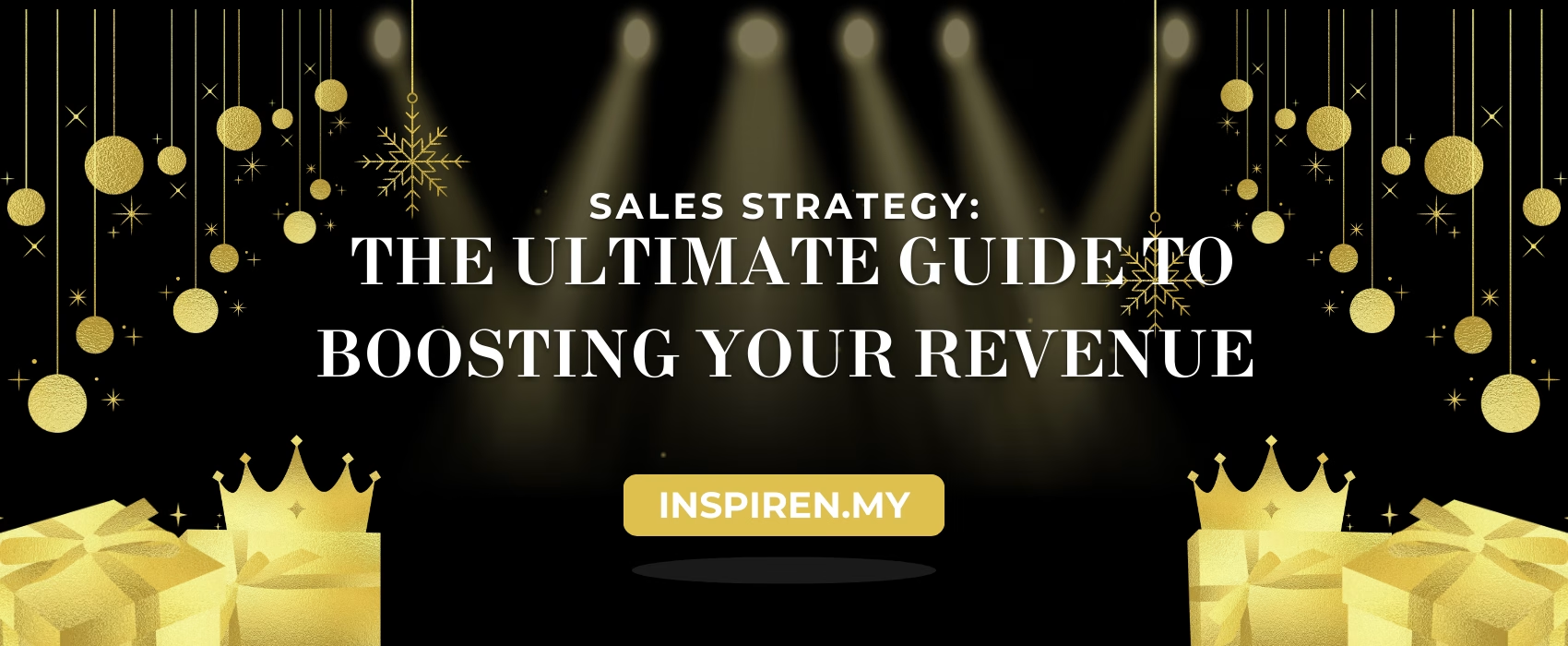
In today’s competitive market, having a winning sales strategy is no longer optional—it’s essential. Whether you’re a startup founder, sales manager, or entrepreneur, the right approach can mean the difference between missing targets and crushing your revenue goals.
This guide will walk you through what a sales strategy really is, the best tactics for 2025, and how to avoid costly mistakes—so you can close more deals and grow your business faster.
What is a Sales Strategy?
A sales strategy is a clear and structured plan that outlines how your business will attract, engage, and convert prospects into paying customers while achieving its sales goals. It involves identifying your ideal audience, understanding their pain points, and aligning your sales efforts to provide the best solutions. A well-defined strategy ensures that your sales funnel is optimized, key performance indicators (KPIs) are established, and data-driven adjustments are made based on customer feedback. By selling smarter—not just harder—you can create a more efficient and effective sales process that drives consistent revenue growth.
Think of your sales strategy as a roadmap that guides your team through the entire sales journey. It defines who your ideal customers are, how you will reach them, what messaging will persuade them to buy, and when and how often you should follow up. Without a strategy in place, sales efforts become a matter of guesswork, leading to wasted time, money, and missed opportunities. A well-executed sales strategy not only helps convert leads into customers but also fosters long-term relationships, ensuring repeat business and brand loyalty.
Key Components of an Effective Sales Strategy
A strong sales strategy isn’t just about cold calling or discounts. To craft a robust sales strategy, certain elements must be in place:
1. Clear Objectives & Goals
Set specific, measurable, achievable, relevant, and time-bound (SMART) goals. These could range from increasing revenue by 20% in the next quarter to improving your lead conversion rate.
2. Target Market Definition
Identify who your ideal customers are. Understand their pain points, demographics, buying behavior, and how your product/service can solve their problems better than competitors.
3. Sales Funnel Optimization
A sales funnel is the path potential customers take from initial awareness to final purchase. By optimizing your funnel, you ensure that leads move smoothly through each stage: awareness, consideration, and decision.
4. Value Proposition
Your value proposition is the promise you make to your customers. It should explain why your product or service is valuable, how it solves their problems, and what makes it unique.
5. Sales Tactics & Techniques
Choose sales tactics that align with your goals and market. From cold calling and email marketing to social selling and webinars, having a diverse set of tools at your disposal can help boost your sales.
6. Team Training & Alignment
Make sure your sales team is well-equipped with the right knowledge and skills. Alignment across sales, marketing, and customer support teams is essential to deliver a seamless customer experience.
Best Sales Strategies for 2025
As we head into 2025, staying ahead of the curve means adopting innovative sales strategies that leverage new technology and evolving customer behavior. Here are some of the top sales strategies for 2025:
1. Data-Driven Selling
Use data analytics to understand customer preferences, anticipate their needs, and deliver personalized experiences. Data-backed decision-making will enable your team to be more effective in closing deals.
2. Social Selling
Social media platforms like LinkedIn, Instagram, and Twitter have become essential sales tools. Social selling allows you to connect with prospects, build relationships, and nurture leads through content, messaging, and engagement.
3. AI-Powered Sales Automation
Artificial intelligence (AI) is revolutionizing the sales landscape. From chatbots that handle initial inquiries to AI tools that predict the likelihood of a deal closing, automation helps streamline your sales process and boosts efficiency.
4. Personalization
Customers are increasingly expecting tailored experiences. Use personalized emails, offers, and content to engage with leads based on their behavior and interests, making them feel heard and valued.
5. Customer-Centric Selling
Shift the focus from just closing a deal to genuinely solving your customers’ problems. A customer-centric sales approach builds trust and leads to long-term relationships, repeat business, and referrals.
B2B vs B2C Sales Strategies
| Aspect | B2B Sales Strategy | B2C Sales Strategy |
|---|---|---|
| Sales Cycle | Longer, multiple decision-makers involved | Shorter, often an individual decision |
| Decision Making | Logical, data-driven, ROI-focused | Emotional, impulse-driven |
| Target Audience | Businesses, organizations, key stakeholders | Individual consumers |
| Sales Approach | Relationship-based, consultative selling | Mass marketing, transactional selling |
| Customer Relationship | Long-term, repeat contracts & partnerships | One-time or repeat purchases, brand loyalty |
| Price Point | Higher, customized pricing & negotiation | Lower, standard pricing |
| Product Complexity | Often complex, requires explanation/demo | Simpler, easy to understand |
Common Sales Mistakes
No sales strategy is perfect, and mistakes are part of the journey. However, avoiding common pitfalls can save you time and money. Here are a few mistakes to watch out for:
1. Lack of Clear Goals – Without clear goals, it’s easy to lose focus. Ensure your sales team knows what success looks like and how they will achieve it.
2. Ignoring Data & Analytics – Relying on intuition alone can lead to missed opportunities. Use data to refine your strategy and make informed decisions.
3. Overlooking Follow-Up – Many sales are lost simply due to lack of follow-up. Stay in touch with prospects and maintain relationships after the sale.
4. Inadequate Sales Training – A well-trained sales team is crucial for success. Provide continuous learning opportunities to keep your team sharp and up to date with industry trends.
Step-by-Step Guide to Creating Your Sales Strategy
Creating an effective sales strategy requires careful planning, execution, and continuous optimization. Below is a detailed breakdown of each step to ensure your sales team is set up for success.
1. Define Sales Goals
Why it’s important: Goals provide direction, motivation, and a way to measure success. Without clear goals, your sales team may lack focus.
Set SMART Goals:
-
- Specific: Clearly define what you want to achieve. (e.g., “Increase revenue by 20% in the next quarter.”)
- Measurable: Trackable metrics such as conversion rates, customer acquisition cost, or average deal size.
- Achievable: Goals should be challenging but realistic.
- Relevant: Align sales goals with overall business objectives.
- Time-bound: Set deadlines to create urgency and accountability
2. Research Your Target Market
Why it’s important: Understanding your customers allows you to tailor your messaging and sales approach effectively.
Key Areas to Research:
-
- Who are they? (Industry, demographics, job roles, company size)
- What problems do they face? (Pain points, challenges)
- How do they make purchasing decisions? (Budget, influencers, decision-makers)
- Where do they hang out? (Social media, online communities, networking events)
3. Design Your Sales Funnel
Why it’s important: A structured funnel ensures leads smoothly move through each stage, improving conversion rates.
Sales Funnel Stages:
-
- Awareness: Prospect discovers your business through marketing efforts (ads, content, referrals).
- Interest: They engage by visiting your website, downloading a guide, or signing up for a webinar.
- Consideration: Prospect evaluates your offer, compares alternatives, and seeks social proof.
- Decision: The lead commits to buying or engaging in negotiation.
- Retention: After closing, focus on customer satisfaction and upselling opportunities.
4. Choose Your Sales Techniques
Why it’s important: Not all sales tactics work for every business—choosing the right approach ensures higher conversion rates.
Common Sales Techniques:
-
- Solution Selling: Focus on solving customer problems rather than just selling a product.
- Consultative Selling: Engage in meaningful conversations to understand client needs.
- Social Selling: Use LinkedIn, Facebook, and other social platforms to connect with prospects.
- Cold Outreach: Email, calls, or messages to engage potential customers.
- Inbound Sales: Leverage SEO, content marketing, and webinars to attract leads.
- Referral Selling: Use satisfied customers to generate word-of-mouth sales.
5. Equip Your Team
Why it’s important: Your sales team needs the right skills, tools, and resources to succeed.
Training Areas for Your Sales Team
-
- Product Knowledge: Ensure the team understands every feature and benefit of your offering.
- Sales Scripts & Objection Handling: Prepare scripts and responses to common customer concerns.
- CRM Training: Teach your team how to use CRM tools to manage leads and track interactions.
- Role-Playing & Coaching: Conduct regular practice sessions to improve confidence and performance.
6. Measure and Optimize
Why it’s important: Continuous tracking and improvement ensure that your sales strategy evolves with market trends.
Key Metrics to Track:
-
- Lead Conversion Rate: Percentage of leads that turn into customers.
- Sales Cycle Length: Time taken to close a deal.
- Customer Acquisition Cost (CAC): Cost spent to acquire each new customer.
- Customer Lifetime Value (CLV): Total revenue expected from a single customer over their relationship with your company.
- Win/Loss Ratio: How many deals you close versus lose.
Ways to Optimize Sales Performance
- A/B Testing: Experiment with different sales messaging and approaches.
- Customer Feedback: Conduct post-sale surveys to identify areas for improvement.
- Data Analysis: Use AI-driven analytics to gain deeper insights into sales performance.
Conclusion
A well-crafted sales strategy is the foundation of a successful business. By leveraging data-driven insights, social selling, AI automation, and customer-centric approaches, companies can drive sustainable revenue growth and long-term customer relationships.
Sales is not just about closing deals—it’s about building trust, providing value, and fostering connections that lead to repeat business. Continuously refining your sales approach based on performance data and market trends will ensure you stay ahead of the competition.
No matter the industry, businesses that focus on personalization, effective communication, and strategic execution will thrive in 2025 and beyond.
Frequently Asked Questions (FAQs)
Should my business focus on inbound or outbound sales?
It depends on your target audience and business model. Inbound sales work well for high-value B2B leads, while outbound sales can generate quick B2C conversions.
How do I choose the right sales channel for my business?
When choosing a channel, consider the purchasing habits of your target audience. For example, a B2B business might be better suited to LinkedIn and websites, while a B2C might rely on social media advertising and e-commerce platforms.
Will AI replace salespeople?
AI will not replace salespeople, but will help them manage customers more efficiently, predict sales trends, and automate repetitive tasks such as data entry and email follow-ups.


